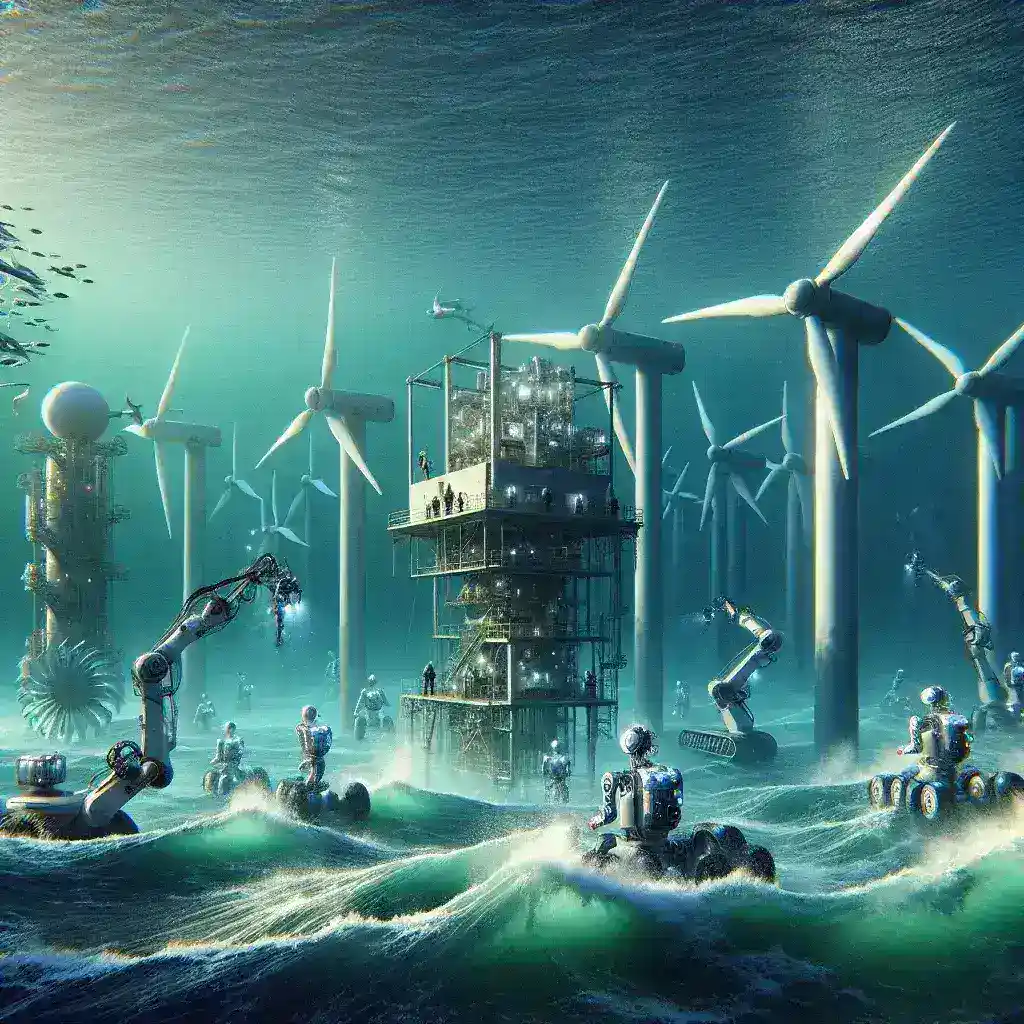Robotic AI Systems Constructing Undersea Renewable Energy Plants
Introduction
As the world shifts towards sustainable energy solutions, the pursuit of renewable energy is taking on new forms. Among these, undersea renewable energy plants are emerging as a pivotal component in the quest for alternative energy sources. The integration of robotic AI systems in constructing these underwater facilities is revolutionizing the industry. This article delves into how robotic AI is shaping this undersea construction landscape, the technological advancements enabling this shift, and the implications for future energy production.
The Rise of Undersea Renewable Energy
Undersea renewable energy plants primarily harness energy from tidal, wave, and ocean thermal energy. These sources are abundant and consistent, making them attractive options in the renewable energy portfolio. As countries grapple with climate change, the need for innovative energy solutions has never been more urgent. The global renewable energy market is projected to grow exponentially, with undersea installations poised to play a significant role.
Historical Context
The concept of harnessing ocean energy is not new. Early experiments date back to the 19th century, but it wasn’t until the late 20th century that technological advancements allowed for more practical applications. With the introduction of robotic technology and AI, the construction of these plants has become more feasible. These advancements promise to address many logistical and environmental challenges posed by traditional underwater construction methods.
Technologies Behind Robotic AI Systems
Robotic AI systems used in constructing undersea renewable energy plants encompass a wide range of technologies. These systems are designed to operate efficiently in challenging underwater environments, ensuring safety and effectiveness in construction tasks.
Automation and Robotics
Modern robotics has evolved to include autonomous systems capable of performing complex tasks without human intervention. These systems can operate at depths where human divers cannot safely work, significantly reducing risk and enhancing efficiency.
Types of Robotic Systems
- Autonomous Underwater Vehicles (AUVs): These unmanned vehicles can navigate underwater terrains, gather data, and deploy construction materials.
- Remotely Operated Vehicles (ROVs): Controlled from the surface, ROVs can carry out real-time inspections and facilitate the assembly of undersea structures.
- Robotic Arms: These are used for precise tasks such as welding, cutting, and assembling components in difficult-to-reach locations.
The Role of Artificial Intelligence
AI plays a crucial role in enhancing the capabilities of robotic systems. Through machine learning algorithms and advanced data analytics, robotic AI can:
- Predict environmental changes and challenges.
- Optimize construction processes by calculating the best methods and sequences.
- Enhance navigation and operational efficiency.
Challenges in Undersea Construction
Despite the advancements in robotic AI technologies, there are significant challenges associated with constructing undersea renewable energy plants. These challenges include:
Environmental Conditions
The underwater environment is unpredictable. Factors such as strong currents, varying temperatures, and marine life can complicate construction efforts.
Technical Limitations
While robotic systems have advanced, they are still limited by battery life, communication delays, and the durability required to withstand extreme underwater pressures.
Cost Implications
Initial investments in robotic AI technologies and the construction of undersea plants can be high. However, the long-term benefits of renewable energy and reduced operational costs can outweigh these initial expenditures.
Future Predictions
The future of undersea renewable energy looks promising with the continued evolution of robotic AI systems. As technology advances, we can expect:
- Increased Efficiency: Enhanced AI algorithms will lead to smarter robotic systems capable of performing tasks more quickly and accurately.
- Wider Adoption: As costs decrease, more countries and companies may invest in undersea renewable energy, expanding the market.
- Sustainable Practices: With growing environmental awareness, the development of eco-friendly construction practices will be paramount.
Pros and Cons of Robotic AI in Undersea Construction
Pros
- Enhanced Safety: Reduces the need for human divers in hazardous conditions.
- Operational Efficiency: Speeds up construction processes and minimizes errors.
- Data Collection: Provides valuable data for monitoring environmental impacts and operational efficiency.
Cons
- High Initial Costs: Significant investment required for technology and infrastructure.
- Technical Challenges: Ongoing development needed to address environmental and operational limitations.
- Job Displacement: Potential reduction in traditional construction jobs due to automation.
Real-World Examples
Several projects around the globe have begun to integrate robotic AI systems in constructing undersea renewable energy plants. For instance, the Hywind Scotland project utilizes advanced robotics for maintenance and monitoring of floating wind turbines, showcasing the potential for AI-enhanced undersea energy solutions.
Cultural Relevance
As nations strive to meet their energy needs sustainably, the cultural significance of renewable energy is paramount. Communities are becoming increasingly aware of the importance of environmental stewardship. The integration of robotic AI systems in undersea energy projects not only represents technological innovation but also embodies a collective commitment to a more sustainable future.
Conclusion
The construction of undersea renewable energy plants using robotic AI systems marks a significant leap forward in energy production. This innovative approach promises to harness the vast potential of our oceans while addressing the urgent need for sustainable energy solutions. As technology continues to evolve, the future of energy derived from our oceans looks increasingly bright, paving the way for a cleaner, more efficient world.
Call to Action
As we embark on this journey towards sustainable energy, it is essential to stay informed about the latest advancements in technology and renewable energy practices. Engaging in discussions, supporting innovative projects, and advocating for sustainable practices can help shape a better future for our planet. Let us embrace the potential of robotic AI systems in constructing undersea renewable energy plants and contribute to a greener tomorrow.

Leave a Reply